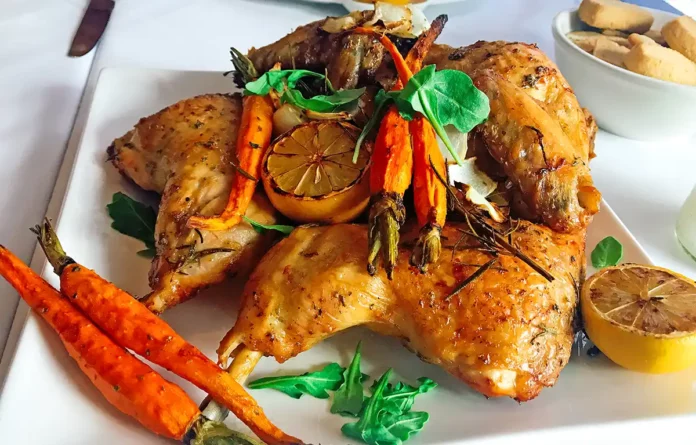
Ahh, we’re in the homestretch of winter. For most of us in the Northern hemisphere, it’s the coldest time of year, which makes us humans crave warm, comforting dishes that sooth the soul.
But, with spring *hopefully* right around the corner, and summer to follow, the thoughts of warmer weather and lighter foods start to sneak in… and what protein can adapt to the myriad of facets of this transitional time of the year? Why, chicken, of course!
Chicken is the world’s most popular protein, with approximately 74 billion chickens raised for consumption around the globe annually, a number expected to rise to 85 billion birds by 2032 – and it’s no wonder.
Chicken is a universally acceptable protein, with all countries, cultures, and animal consuming lifestyles including it as part of their regular diet.
So, how did this petite relative of the dinosaur come to be the one protein to rule us all?

Table of Contents
Why did the Chicken cross the road?
The domesticated chicken has a genealogy dating back 7,000 to 10,000 years.
The chicken’s wild ancestor is the red junglefowl from Southeast Asia, Gallus gallus, though it is likely that some other related species of junglefowl were involved in the evolution to the modern chicken, Gallus domesticus.
Once chickens were domesticated, cultural contacts, trade, migration and territorial conquest resulted in their introduction, and reintroduction, to different regions around the world over several thousand years.
Chickens first appeared in ancient Greece around the fifth century BC. According to lore, Themistocles, the Athenian general, was en route to confront invading Persian forces, when he saw two roosters fighting on the side of the road.
He saw this as an inspiration, telling his troops that these birds only fight because neither will give in to the other – not for the gods, for their ancestors, for glory, liberty, or safety, and they should heed the wisdom.
The Greeks went on to defend their land from the invaders and considered chickens to be symbols of valor.
That being said, in terms of consumption, there was really no such thing as what we know as a modern chicken in ancient Greece, as chickens were not domesticated until centuries later.
The ancients did, however, have game birds like pheasant and quail, which they hunted and enjoyed as supplements to their plant-based diet. They also ate the eggs of these birds, but not as often as Westerners consume chicken and eggs.
What Came First, the Chicken or the Egg?
My best friend growing up was named Kota-Kota. She was a chicken, and she would follow me everywhere.
In the evening, when everyone would return from the farm after working all day in the fields, we would sit around the dinner table, and while Kota-Kota was supposed to be asleep with the rest of the chickens, she would instead be with me, resting by my feet or trying to climb into my lap, which was her favorite place.
My mother and father didn’t like me having a chicken for a pet because they worried I wouldn’t eat eggs or chicken meat.
But this wasn’t the case! Although our family ate chicken only once a week, I ate eggs every day, in every way imaginable.
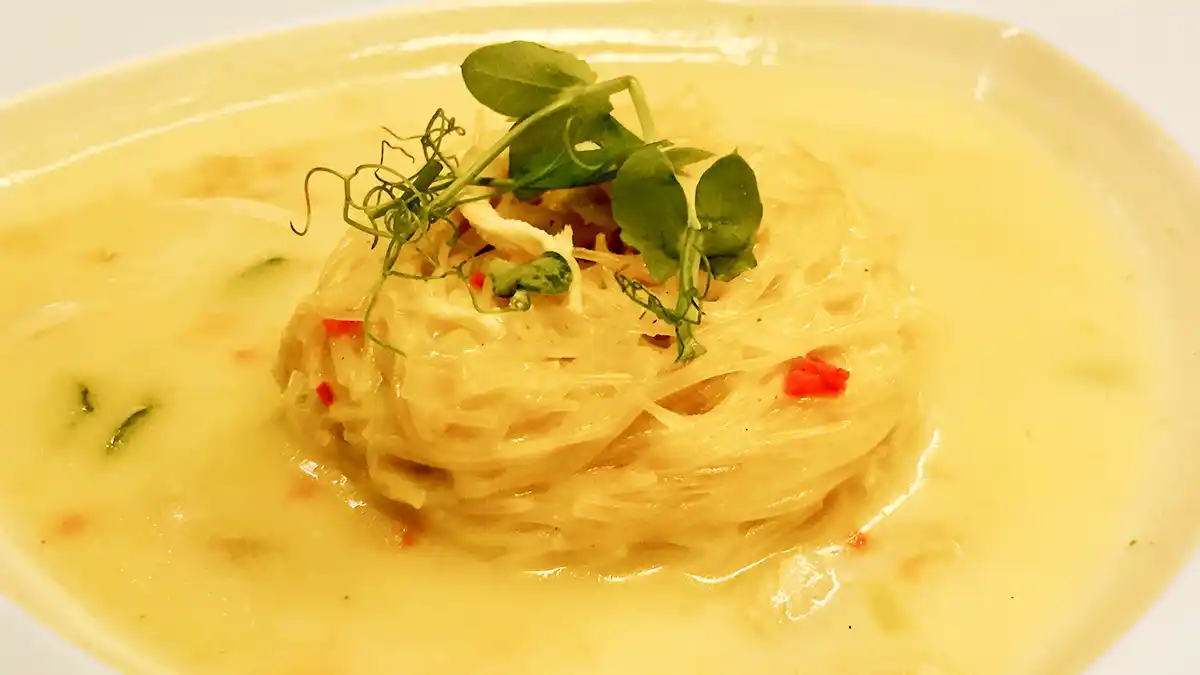
In the winter, my Yiayia (grandmother in Greek) and Theia (aunt) Maria would make kotosoupa avgolemono, or chicken soup with egg-lemon sauce, using the recipe passed down from my megali-yiayia (great-grandmother).
My mother always reminded them to use the older chickens because their aged meat and bones made for a richer broth. They would boil the vegetables and chicken for six hours, skimming the fat off the top, to harness the flavor without all the fatty oils.
Then, they added hylopites, or small, handmade egg noodles, to bulk up the soup, along with the roots of dill and fennel for a wonderful flavor and aroma.
If my mother heard my siblings or me coughing when we came home from school, she would immediately give us a cup of chicken soup to ward off a cold.
She always said it was the perfect food for any time, and none of us ever got very sick. I’m convinced it’s because the chicken soup was so warming and hearty, and full of nutrients from three generations of homeopathic wisdom!
Chicken Soup for the Soul
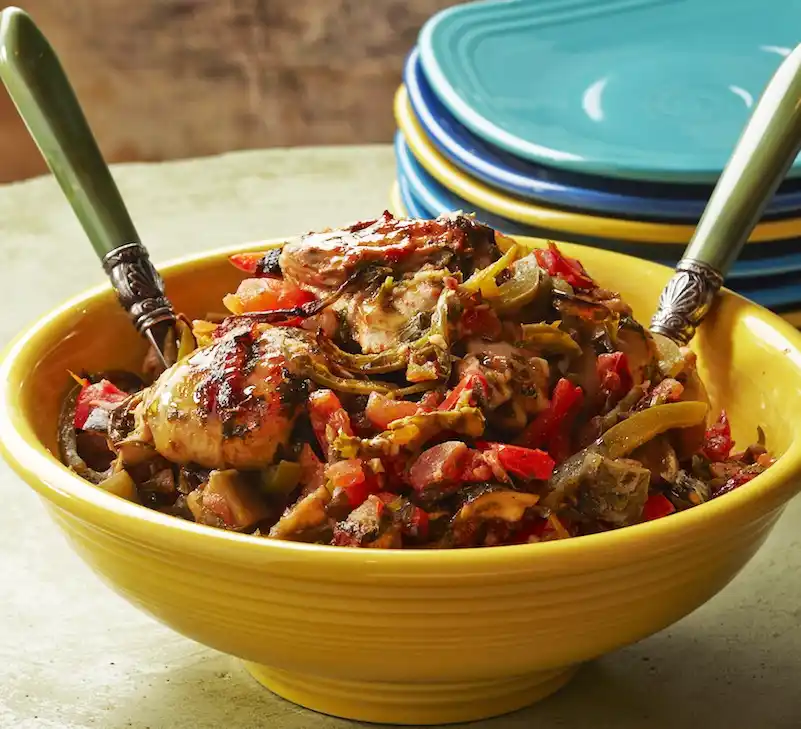
Much like the tri-generational chicken soup I grew up with, chicken is one of the healthiest animal proteins you can eat.
It’s high in protein, low in fat, and full of vitamins and minerals, so it’s great for building muscles, improving brain function, promoting heart health, and strengthening bones.
However, we’re not just talking about the ‘meat’ here – part of what makes chickens so good for you are their bones and connective tissue as well.
Chicken stock, or bone broth may have many additional benefits such as boosted immunity, improved joint support, improved skin elasticity, gut health support, and appetite suppression (because of the additional protein) – but remember, before changing your diet, always ask your doctor.
All this being said, not all chickens are created equal…
In this modern day with industrialized farming, the kind of chickens you can get is greatly varied.
It’s become common knowledge that happy animals are healthier for human consumption.
It’s important to get organic, pasture-raised, humane certified chicken, all of which are standards that ensure the birds are fed a certified organic diet, are outside year-round to engage in natural chicken behaviors, with access to housing where they can protect themselves from the weather or predators, and are treated humanely.
It’s also important that it’s labeled as ‘air-chilled’ which means that when the producers process the chicken, they use blasts of cold air to help ensure quality as well as avoid water retention which can breed bacteria.
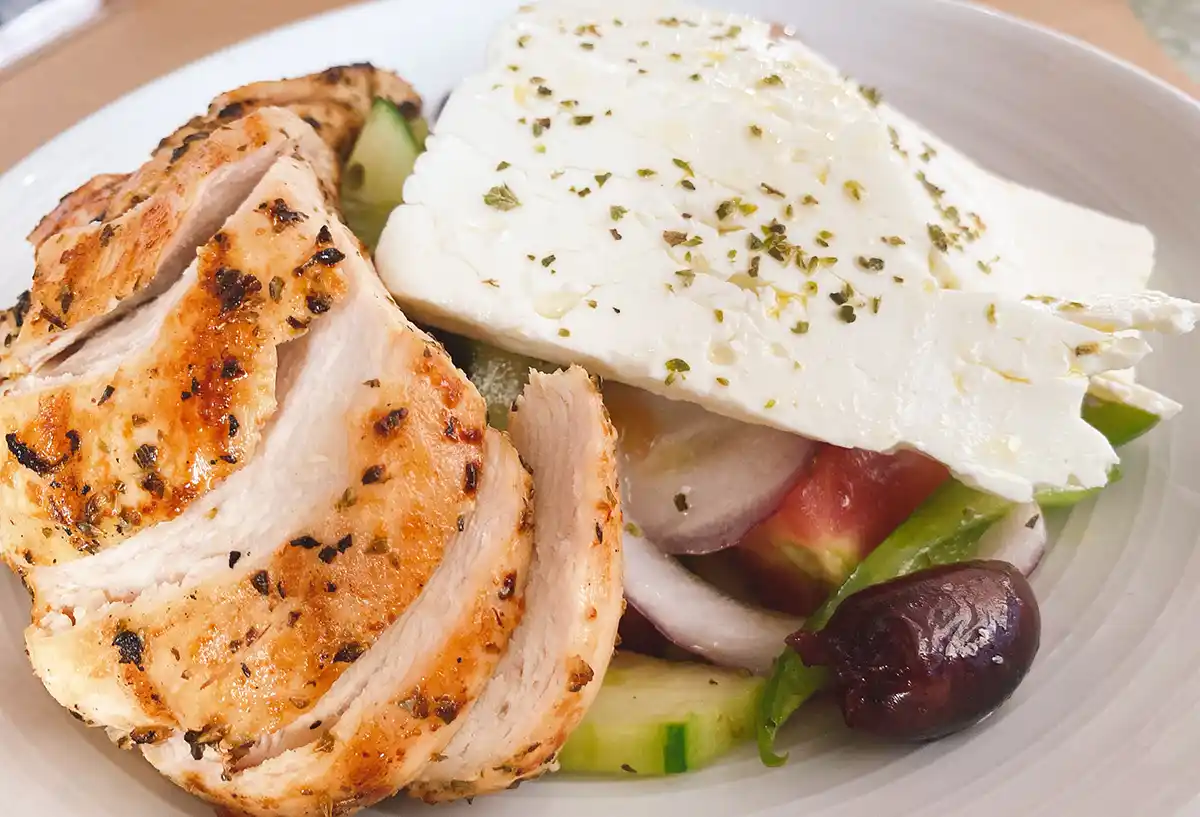
I’ll have the chicken…
When it comes to cooking, chicken is the culinary equivalent to a blank canvas. Though chicken does have a particular flavor and texture, the way you prepare it and the ingredients you partner it with can change it completely.
Different parts of the chicken are better for different preparations (though it’s not necessary to differentiate) – chicken breasts are incredibly lean and do very well with quick cooking, high heat methods like pan searing, grilling, or roasting, while the legs and thighs which are higher in fat (not by much), and can withstand some slower, more indirect heat methods such as braising and stewing.
And, while fried chicken is one of the most popular methods of preparation around the world, there are so many tastier – and healthier – ways to eat these delectable birds!
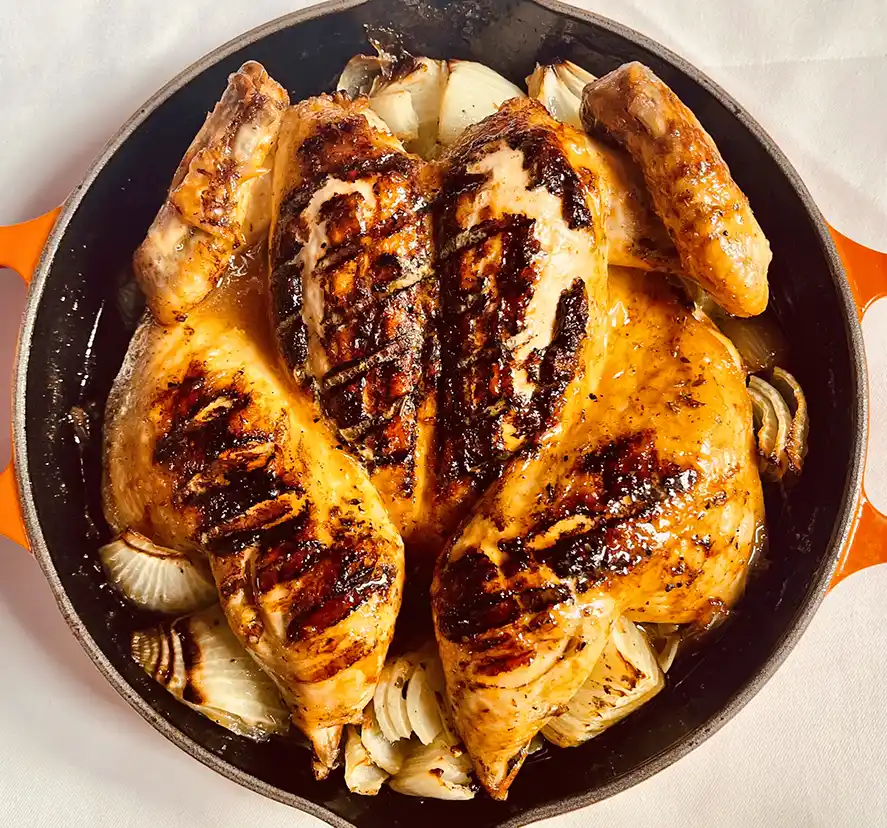
Soups are a never-ending category of preparation, which goes well beyond chicken soup, as many chefs use chicken stock and chicken broth as a base for other recipes – think about cooking your grains in chicken stock for an incredibly savory base for other recipes, like a hearty Mediterranean vegetable stew, or a light and bright salad bowl.
Chicken can host the most delicate flavor profiles, or stand up to unctuous bold combinations – think about the juxtaposition of Japanese versus Indian cuisines.
And let’s not forget the roosters and capons (neutered males) – these birds have a richer, slightly gamier flavor that marries with low and slow braises, like Kokoras Krassatos from Corfu, a Kyknos tomato paste-cinnamon braised rooster dish (where you can easily substitute capon or chicken), or the French Coq-Au-Vin, wine braised rooster, which the legendary Julia Child made famous with chicken.
The simply marinated chicken breast, with a touch of lemon, olive oil, and oregano is the most ubiquitous of them all – the easy addition to any salad or vegetable dish to boost the protein content and showcase the flavors of Greece.
Chicken is a staple throughout the world, no matter race, religion, culture, or creed – just remember that not all chickens are created equal, and no matter how tasty these birds are, we’re working towards a Plant Forward world – let’s give this hard-working fowl a rest, and let our vegetables do some heavy lifting for our health and wellbeing.
All photo credits are Chef Loi
























